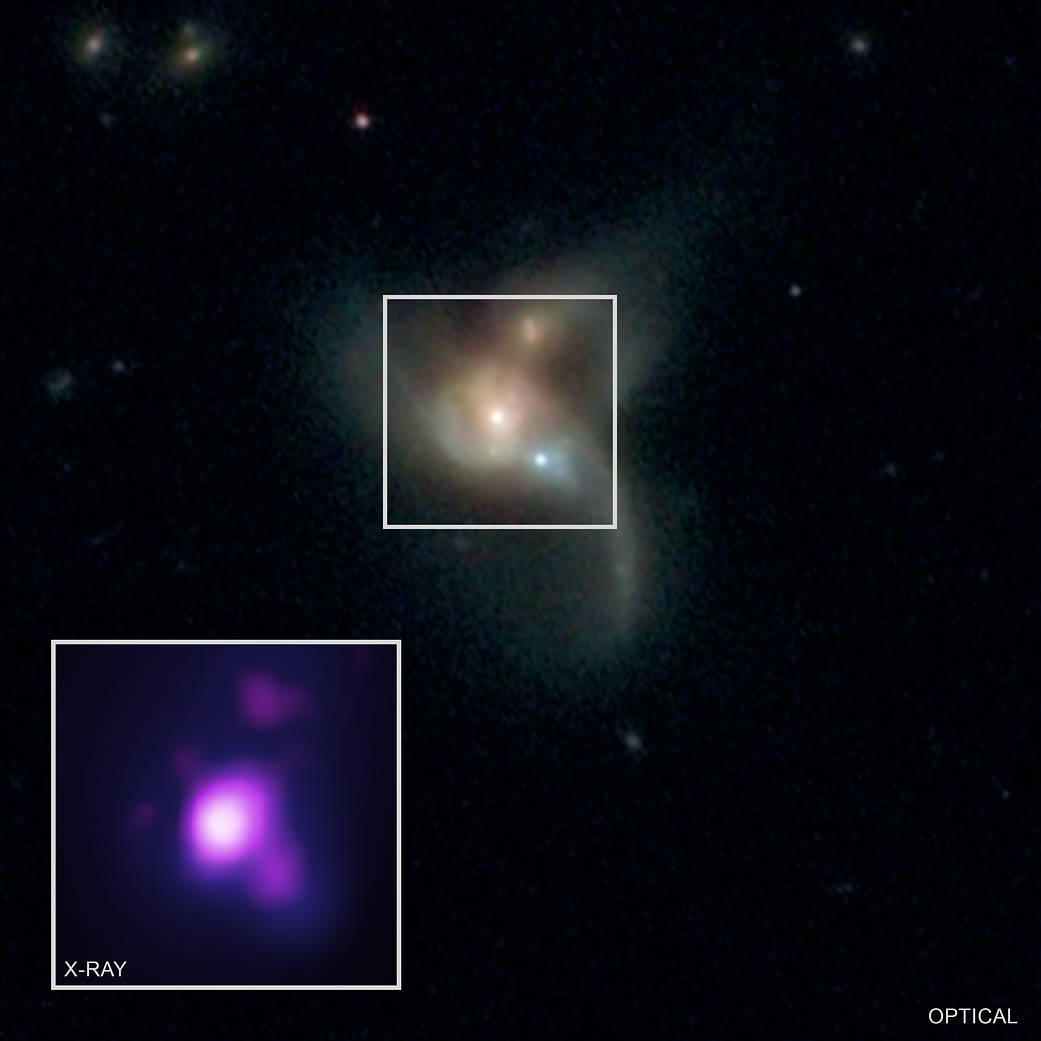Three Supermassive Black Holes Are on a Crash Course, NASA Says
Credit to Author: Becky Ferreira| Date: Thu, 26 Sep 2019 21:44:03 +0000
It’s wild enough when two supermassive black holes collide, but scientists have now spotted an extremely rare triple hole smash-up.
The impending collision is occurring one billion light years away in a system called SDSS J0849+1114, which is a merger of three galaxies, according to NASA.
Scientists led by Ryan Pfeifle, an astrophysicist at George Mason University, identified the epic event while hunting for galaxy mergers, which occur when two galaxies collide and evolve into a unified system. Big galaxies host supermassive black holes in their centers, so a galactic merger may lead to a collision of gigantic black holes, as well.
Supermassive black holes are the largest type of black hole known to scientists, and can grow to be millions or even billions of times as massive as the Sun. When galaxies collide, their central black holes emit radiation as they consume stars, gas, and dust from the merger. (While light cannot escape a black hole once it has passed the event horizon, tidal forces at the outside edge of black holes heats up matter, making it visible to telescopes).
Citizen scientists working on Galaxy Zoo, a project that allows users to help categorize galaxies in sky surveys, classified the system as a galactic merger using optical light images taken by the Sloan Digital Sky Survey (SDSS) telescope in New Mexico.

Pfeifle’s team then took a closer look at the system across multiple wavelengths, using three NASA telescopes: the Wide-field Infrared Survey Explorer (WISE), the Chandra X-ray Observatory, and the Nuclear Spectroscopic Telescope Array (NuSTAR) spacecraft.
The results revealed that SDSS J0849+1114 contains three supermassive black holes that are about 10,000 light years to 30,000 light years away from each other, according to Space.com.
Pfeifle and his colleagues will publish their findings in a forthcoming issue of The Astrophysical Journal (a preprint version is available on arXiv). Further observation of this galactic triplet could shed light on the potential dynamics of mergers between three supermassive black holes, compared to pairs.
According to a theory called the "final parsec problem,” the presence of a third black hole may hasten the merging of the other two. It’s possible that all three could eventually become one hole, but some theories suggest that supermassive black holes can also end up in tight orbits around each other, therefore remaining separate—though close—entities.
“We were only looking for pairs of black holes at the time, and yet, through our selection technique, we stumbled upon this amazing system,” said Pfeifle in a statement. “This is the strongest evidence yet found for such a triple system of actively feeding supermassive black holes.”
This article originally appeared on VICE US.